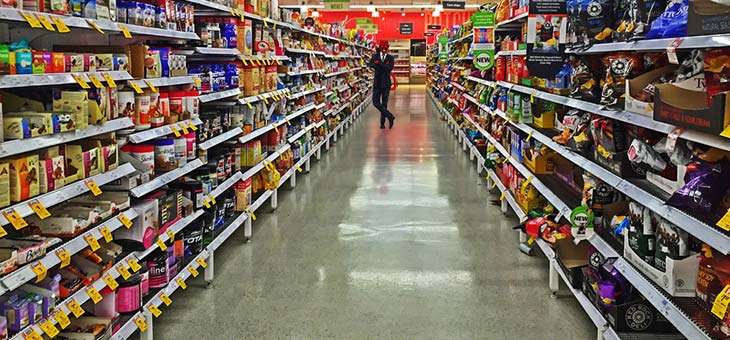Supermarkets have been seen by many, particularly older Australians, as somewhat of a saviour throughout these strange days, but a new study reveals they may be devils in disguise.
Promotion of junk foods and comfort foods, particularly in socioeconomically disadvantaged areas, is encouraging poor dietary habits, say researchers from Deakin University’s Global Obesity Centre in the Institute for Health Transformation.
The Inside our supermarkets: Assessment of the healthiness of Australian supermarkets report found that soft drinks, chips, chocolates and lollies get more shelf space, bigger discounts more frequently than healthier options and prominent placement at end-of-aisle displays and near checkouts.
Around 80 per cent of end-of-aisle displays for food and drinks contained unhealthy items, making it almost impossible to pay for groceries without being exposed to junk food and drinks.
Unhealthy food was present at 90 per cent of all staff-assisted checkouts.
Food on special at checkouts was 7.5 times more likely to be unhealthy than healthy.
Shelf space allocated to some unhealthy food and beverages (compared with fruit and vegetables) in the most disadvantaged areas was nearly 10 per cent higher than in the least disadvantaged areas.
“The recent rush on products during the COVID-19 pandemic highlighted the central role of supermarkets as the main source of food for most Australian households,” said lead researcher Associate Professor Gary Sacks.
“We also know that up to 35 per cent of what Australians eat is considered unhealthy. If we are to improve Australian diets we need supermarkets to play a greater role in encouraging people to select healthy options.”
The report said supermarkets could do this by providing healthier checkouts containing no chocolate and soft drinks, replacing unhealthy items with healthy food and drinks at end-of-aisle displays, giving less shelf space to unhealthy items and offering fewer discounts on unhealthy food and drinks.
Of the more than 100 supermarkets throughout Victoria that were audited, 26 were Woolworths supermarkets, 26 were Coles, 26 Aldi and 26 independent supermarkets.
“Aldi stores were less likely to promote unhealthy foods at end-of-aisle displays and checkouts compared to the other major chains, but there was little difference between Coles and Woolworths on key indicators of in-store healthiness,” said Assoc. Prof. Sacks.
“A major concern was that, on some measures, supermarkets in more socioeconomically disadvantaged areas were less healthy than those located in less disadvantaged areas.
“People living with socioeconomic disadvantage have higher rates of diet-related diseases, are less likely to eat healthy, nutritious food, and are more likely to over-consume unhealthy food.
“The extent to which unhealthy food is pushed at us shouldn’t depend on the suburb in which we live.
“Encouragingly, the two healthiest stores in the study were both independent stores with abundant fresh food, and few promotional displays for unhealthy food and drinks. That demonstrates that a healthier supermarket environment is possible.
“We need all Australian supermarkets to set higher standards relating to food promotion.
“If supermarkets and the processed food industry don’t take action to improve their practices, then government should be ready to step in to ensure the supermarket environment encourages more healthy choices.”
Have you ever noticed how much unhealthy food is promoted compared with healthier options?
If you enjoy our content, don’t keep it to yourself. Share our free eNews with your friends and encourage them to sign up.
Related articles:
Supermarkets behaving badly
Supermarkets to work together
Supermarkets’ hypocrisy revealed

